Earlier this year, in 2013, the Zoological Society of London recently launched an online application to highlight the tiger exhibit at the London Zoo, the recent addition of two new big cats to the zoo, and the plight of the 300 Sumatran tigers left in the wild. Even better, the application allows anyone in the world to post information about their house cats and neighborhood cats. While there are no felines posted for Norway, Sweden, Iceland, and a number of other countries, over 12,000 cats are listed for many other places. Perhaps cats are too sensible to live in cold climates.
Which got me thinking, since this article is about using for fun the research skills used to create this magazine, what other tracking websites might be online? What scientific sites might exist where students could poke around and maybe learn a few things? Or even participate?
Because we start with cats, and cats like birds, the first site I found was MoveBank.org which led me to a bird off South Africa, in the middle of the South Atlantic ocean, a TOW Atlantic yellow-nosed albatross geolocators from Gough 2004, which led to SeaBirdTracking.org. Their Tracking Ocean Wanderers database has 6,848 tracks covering 41 species from 46 different sites. You can view data grouped by project, species, or site. Or as individual tracks, or paths.
Here’s the path of an Amsterdam Albatross, except they’re in the Indian Ocean!
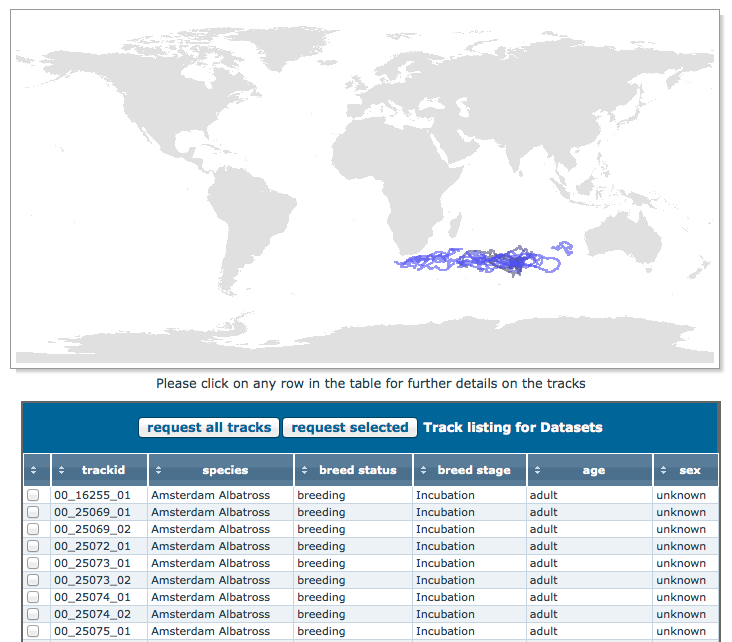
Digging a bit deeper into their list of tracked birds, here’s the path of several Cory’s Shearwaters:
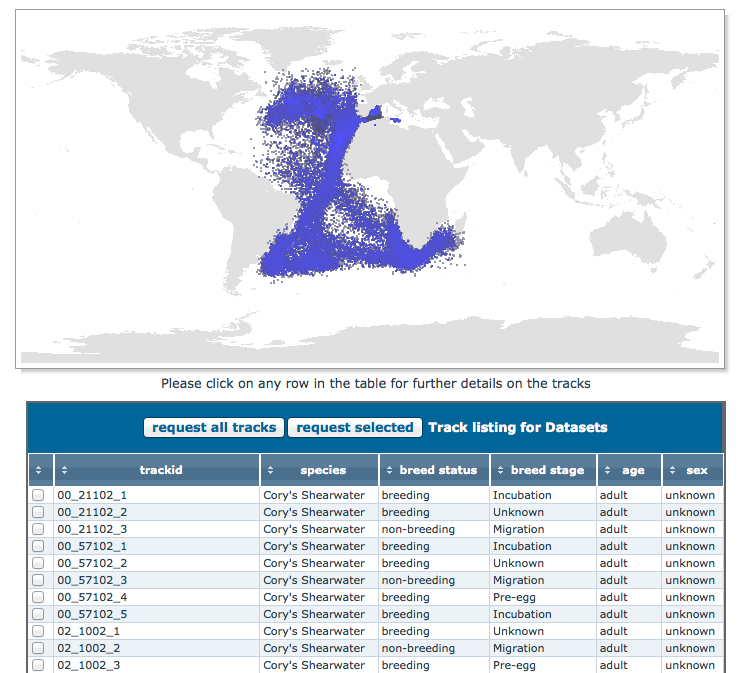
I then looked up the Amsterdam Albatross and discovered, to my surprise, they live on Amsterdam Island in the Indian Ocean. Even better, Amsterdam Island is part of the French Southern and Antarctic Territories and have nothing to do with Holland or the Dutch. How clever. The Cory’s Shearwater is a Mediterranean bird with a much less complicated provenance.
What about walruses? Turns out there is an online tracking database for these giants, as well. On the US Geological Survey site, Alaska Science Center, there’s a neat Flash animation to show walrus radio-tracking in the southern Chukchi Sea from July 17, 2011 to January 4, 2012. They tracked 40 walruses in mid-July and 34 walruses in northwest Alaska in late August 2011. The red X that appears from time to time is alarming, likely a dead walrus. But you clearly see migration patterns, especially in late 2011 when sea ice moves south.
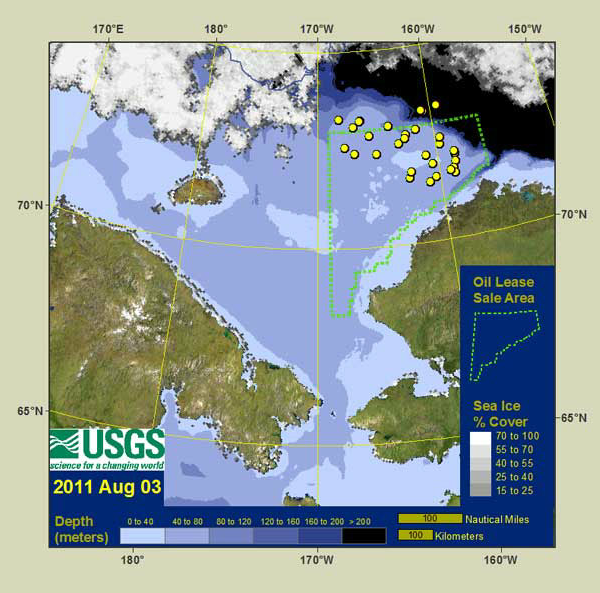
Clicking around the Alaska Science Center site also yields at least one cute picture of otters, and detailed description of how scientists monitor them, but no other tracking data.
Next, I found a website tracking the behavior of an osprey in Jamaica Bay, near New York City. The male osprey is named Coley and the site gives lots of great scientific information about nest sites in the bay and regular updates. Coley travels 2,700 miles from Colombia to New York City on his migration route. Coley's route includes Orlando, Florida where, presumably, he spendx a few days at Disney World and Epcot visiting mice named Mickey and Minnie prior to flying north and back to his nest in Jamaica Bay.
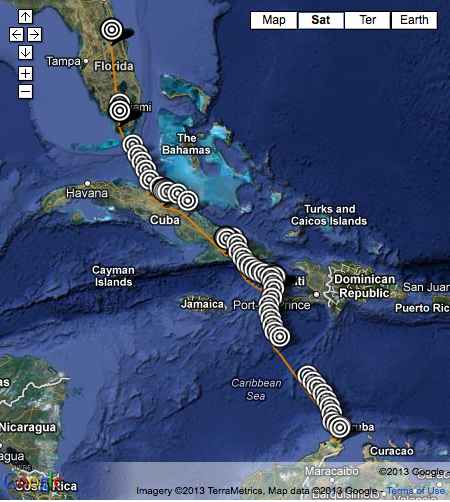
Searching further online for animal tracking led me to a story about a 17 foot python in the Florida Everglades. When they dissected it, the python had 87 eggs inside. Cute little baby pythons, presumably. Searching to find out how many of those 87 eggs might have survived into adulthood turned up a story about a 2-year old strangled in their crib by a pet python, an eight-footer named Gypsy that escaped its aquarium. Yes, in Florida, in 2009. The baby’s parents were convicted of third-degree murder, manslaughter, and child abuse two years later. Apparently the top of their aquarium only had a quilt pinned with baby pins.
Animal tracking also led me to something I’d forgotten since my Boy Scout days, animal tracks. If you’re in the woods and you see these tracks, for example, probably you should head home:
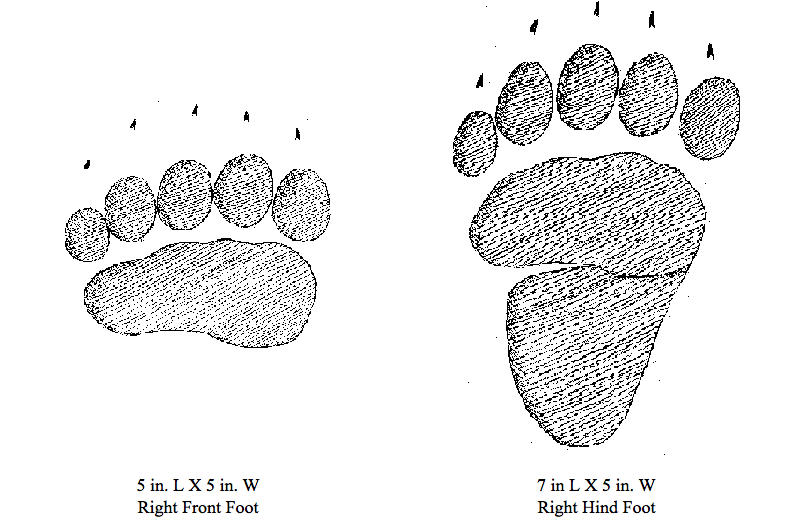
It’s a black bear. The site also had breathless pictures of bear claw marks on trees, plaster of Paris casts (remember those?), and scat. If you don’t know scat, you probably don’t want to know what it is.
Another site I came across is BISON, short for Biodiversity Serving our Nation (that would be the US), an online resource tracking over a hundred million species within the US. It’s supported by the US Geological Survey. The data comes from scientists all over the United States and is the largest map of biodiversity. You could get lost for hours, without tracking mud indoors.
Finally, my animal tracking research led me back to cats, oddly enough. A heart warming story about Holly, a cat lost at an RV rally in Daytona Beach, Florida who somehow travelled 190 miles to its home in West Palm Beach. Dodging pythons and osprey, no doubt. Holly the cat had a microchip to prove her identity. But the neat part is Holly has a tortoise shell coat, somewhat unusual for cats. At least compared to the ones that hang out behind our house.
UPDATE: After writing this story, I came across a wonderful crowd sourced project called Old Weather. Volunteers all over the world input the weather data entered into ships logs in the 1800s and early 1900s to help scientists develop historical weather and climate models for over water weather as well as on land. Adventure Journal, an online magazine, has an article about the project. It might be a great project for an intrepid teacher and their students, making computing (and the benefits of computing) a little more real than slinging code. Of course, if you dig deeper into Old Weather, you’ll discover it is one of several citizen science projects from Zooniverse which has a number of other projects worth a look for teachers and students interested to participate in science projects online.
If you want to follow up on any of these resources for tracking animals, birds, and science, links are below.
Learn More
Zoological Society London: Cat Map
http://sites.zsl.org/maps/catmap
http://arstechnica.com/science/2013/03/demographics-cat-map-plots-locations-names-and-colors-of-london-felines/
Movebank
SeaBirdTracking.org
http://seabirdtracking.org/
http://en.wikipedia.org/wiki/Amsterdam_Albatross
http://en.wikipedia.org/wiki/Amsterdam_Island
http://en.wikipedia.org/wiki/Cory%27s_Shearwater
USGS Alaska Science Center
http://alaska.usgs.gov/science/biology/walrus/
http://alaska.usgs.gov/science/biology/walrus/2011animation_Norseman.html
http://alaska.usgs.gov/science/biology/nearshore_marine/lt_monitoring.php
Osprey’s Journey
http://www.jamaicabayosprey.org/
Pythons
http://dotearth.blogs.nytimes.com/2012/08/15/biologists-track-biggest-florida-python-a-17-footer-with-87-eggs/
http://www.foxnews.com/story/0,2933,529709,00.html
http://www.abcactionnews.com/dpp/news/state/jury-finds-couple-guilty-in-child%27s-strangulation-death-by-pet-python
Animal Tracks: Black Bear
http://www.bear-tracker.com/bear.html
BISON
http://bison.usgs.ornl.gov/
http://arstechnica.com/science/2013/04/interactive-map-plots-locations-of-more-than-100-million-species/
A Cat’s 200-Mile Trek Home Leaves Scientists Guessing
http://well.blogs.nytimes.com/2013/01/19/one-cats-incredible-journey/
Old Weather Project: Crowdsourcing a Time Machine to Revisit Climate Past
http://www.adventure-journal.com/2013/07/crowdsourcing-a-time-machine-to-revisit-climate-past/
http://www.oldweather.org/
https://www.zooniverse.org/
